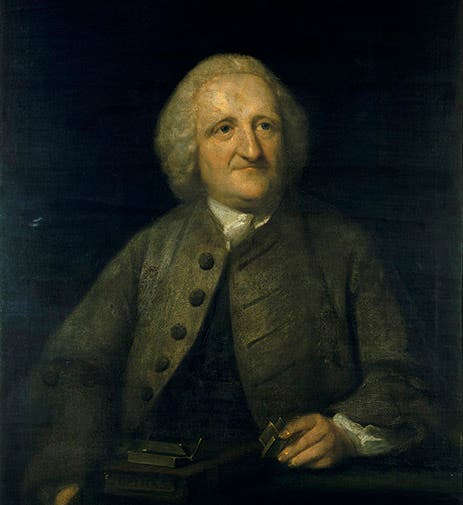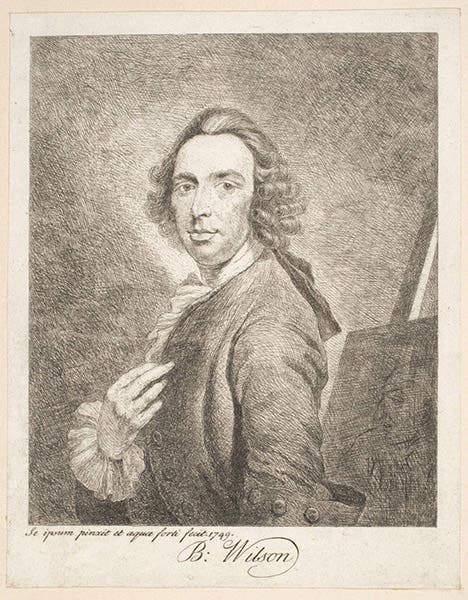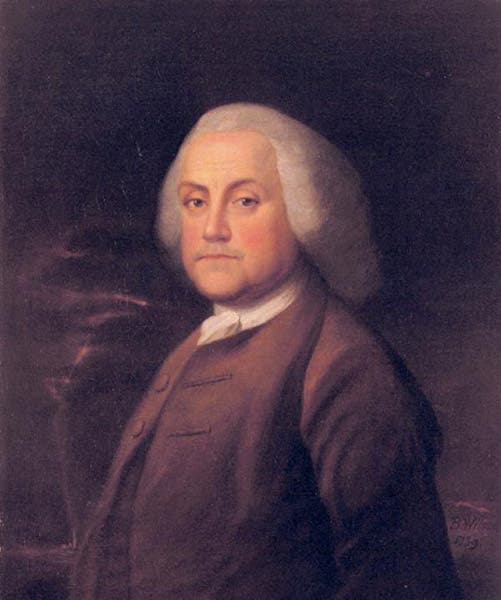Scientist of the Day - Benjamin Wilson
Benjamin Wilson, an English portrait painter and experimental philosopher, died June 6, 1788, at the age of about 67. Wilson came from a well-to-do family, but as often happened, his father's fortunes suddenly collapsed, and Benjamin in 1741 was left to fend for himself. He made his way to London and must have had some skills and experience that we can only guess at, for he found favor in the eyes of members of the Royal Society of London and those seeking portrait painters, groups that sometimes overlapped. Electrical experiments were all the rage in London from 1744 on, and Wilson must have impressed someone, because his book on electricity was published in 1746, a book that we have in our collections, bound into a fat sammelband, along with electrical works from the same period by William Watson and others. We show you here an engraving of his electrical machine, which served as the frontispiece to his book (fifth image), as well as the title page (sixth image).
However, Wilson was really a better portrait painter than an experimenter, and since he often painted scientists, we will shift our focus to his artwork. Two of his finest portraits depicted telescope makers, John Dolland and James Short, and I doubt that that was entirely a coincidence, but I do not know how and why both men chose Wilson to capture their likenesses. John Dolland was regarded by many as the inventor of the achromatic refractor, which eliminated color fringes from refracting telescopes (there was some dispute about who really invented the achromatic refractor), and I really like Wilson's painting of the elder Dolland, probably made before 1761 (when Dolland died), and now in the Royal Museums, Greenwich (first image).
James Short made some of the first high-quality small reflecting telescopes of the time. Wilson is known to have painted Short's portrait; the History of Science Museum at Oxford has a portrait of Short and they think Wilson did it; the Royal Observatory at Edinburgh has a portrait of Short and they don't know who painted it, but I am fairly sure that the Edinburgh portrait is by Wilson and the Oxford version is either a copy or by somebody else entirely. The Edinburgh portrait is the one we show here (fourth image). But I will let the experts sort it out.
Wilson's most famous portrait of a scientist is an early portrait of Benjamin Franklin, painted in 1759, when Franklin was in London (third image). I do not think it is nearly as powerful as the later portraits that one sees more commonly, by Joseph Duplessis and Benjamin West, and quite a few others. But Wilson’s portrait of Franklin is in the White House Collection, which gives it a certain cachet, I suppose.
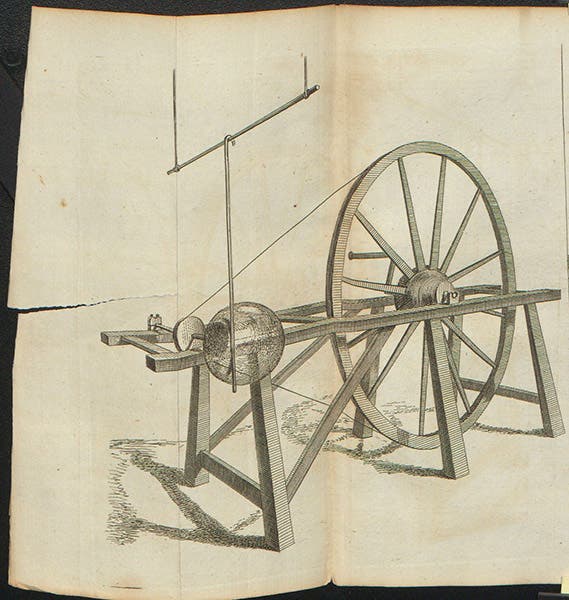
Electrical machine, engraved frontispiece to An Essay towards an Explication of the Phaenomena of Electricity, deduced from the aether of Sir Isaac Newton, by Benjamin Wilson, 1746 (Linda Hall Library)
Wilson's later scientific life was not especially distinguished, as he got into a disagreement with Franklin as to whether lightning rods should have sharp pointed ends (Franklin's view) or should be round and blunt (as Wilson maintained), and he apparently carried the debate far beyond the bounds of proper gentlemen's disagreeing, at least in the opinion of the Royal Society. But he continued to paint portraits until the late 1770s.
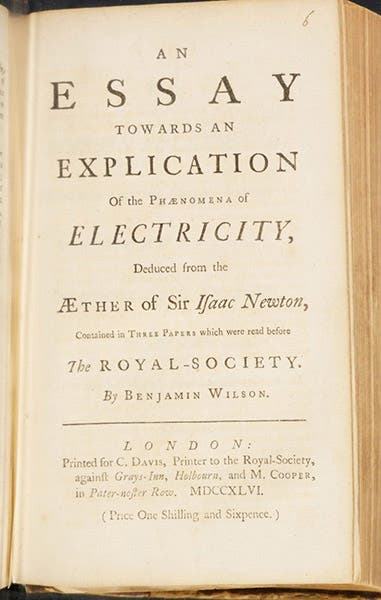
Title page, An Essay towards an Explication of the Phaenomena of Electricity, deduced from the aether of Sir Isaac Newton, by Benjamin Wilson, 1746 (Linda Hall Library)
There are two self-portraits by and of Wilson, both etchings, in the Philadelphia Museum of Art, of which we show one here (second image).
William B. Ashworth, Jr., Consultant for the History of Science, Linda Hall Library and Associate Professor emeritus, Department of History, University of Missouri-Kansas City. Comments or corrections are welcome; please direct to ashworthw@umkc.edu.

